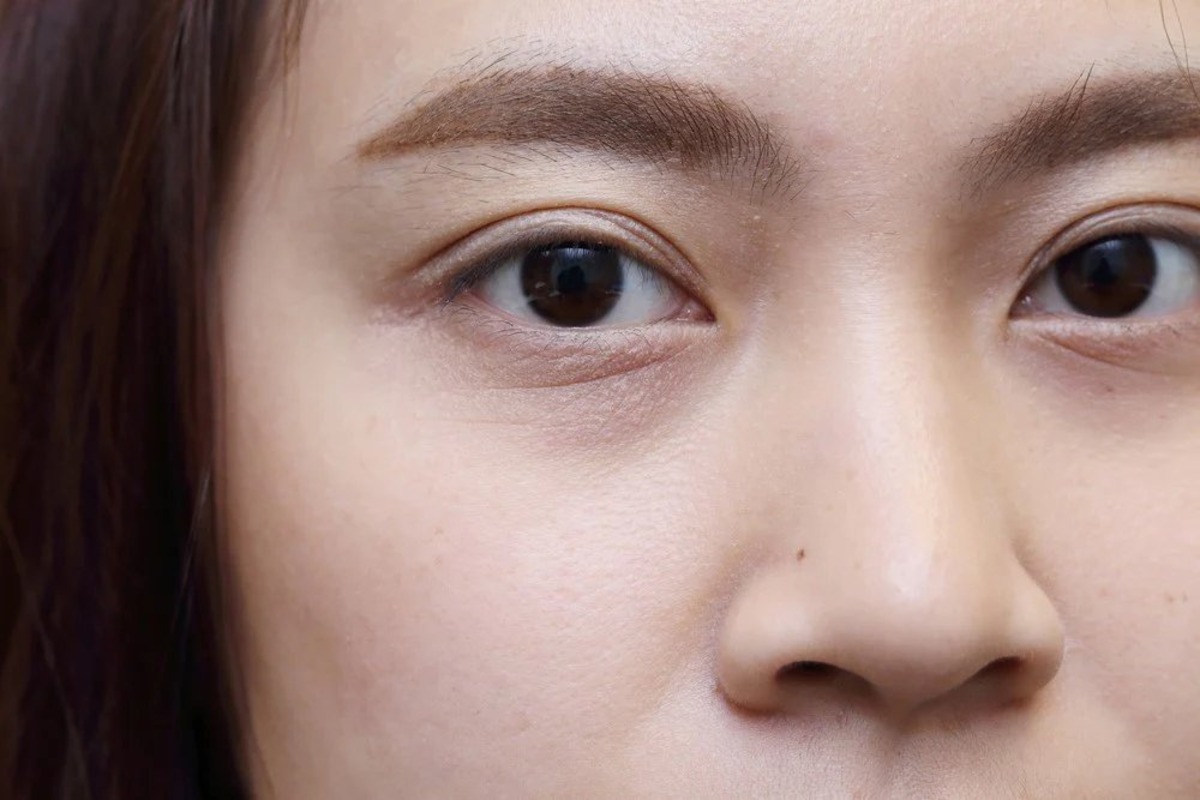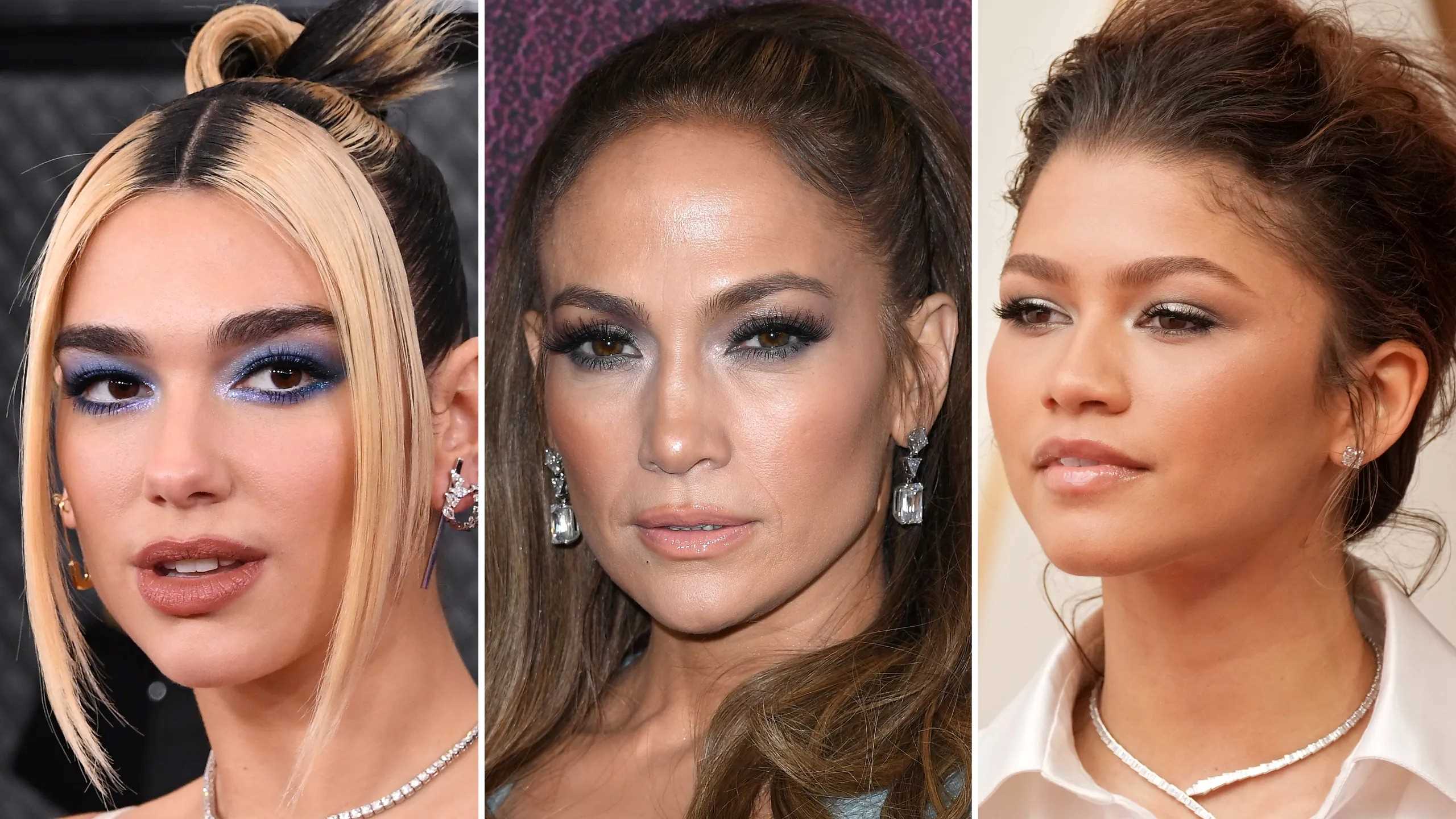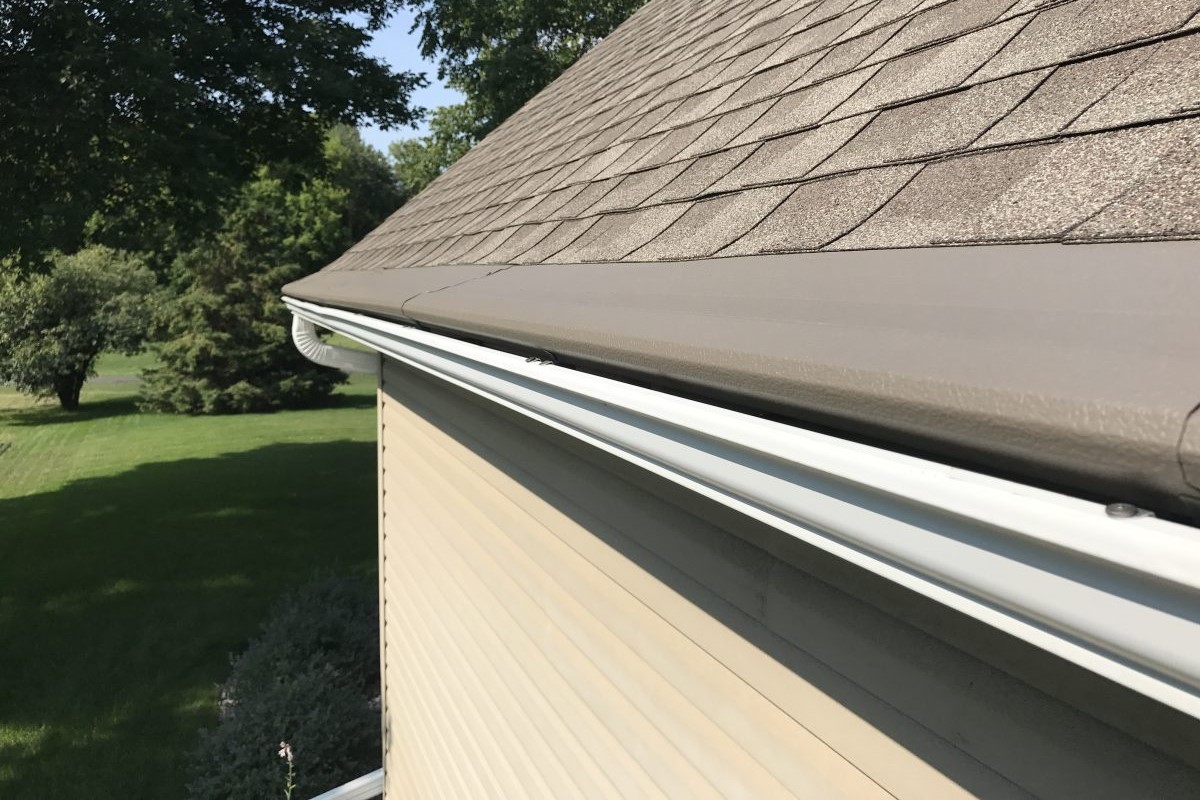Home>Health and Wellness>The Truth About Panda Eyes: Causes And Solutions Revealed!


Health and Wellness
The Truth About Panda Eyes: Causes And Solutions Revealed!
Published: February 8, 2024
Discover the causes of panda eyes and effective solutions for a healthier, brighter look. Improve your health and wellness with expert insights.
(Many of the links in this article redirect to a specific reviewed product. Your purchase of these products through affiliate links helps to generate commission for Noodls.com, at no extra cost. Learn more)
Table of Contents
Introduction
Panda eyes, also known as dark circles, are a common concern for many individuals. These persistent, often frustrating discolorations under the eyes can make anyone appear fatigued, stressed, or older than they really are. The truth about panda eyes is that they are not just a cosmetic issue but can also be a sign of underlying health and lifestyle factors.
Understanding the causes and solutions for panda eyes is crucial for effectively addressing this concern. By delving into the root of the problem, individuals can make informed choices to manage and minimize the appearance of panda eyes. In this comprehensive guide, we will explore the various factors that contribute to panda eyes, including lack of sleep, stress, genetics, aging, and allergies. Additionally, we will delve into practical and effective solutions to combat panda eyes, such as adopting proper sleep habits, implementing stress management techniques, establishing a skincare routine, and considering cosmetic solutions.
By shedding light on the truth about panda eyes and providing actionable strategies, this article aims to empower readers to take control of their eye health and overall well-being. Let's embark on this enlightening journey to uncover the causes and solutions for panda eyes, and discover how small lifestyle changes can make a significant difference in achieving brighter, healthier under-eyes.
What are Panda Eyes?
Panda eyes, commonly referred to as dark circles, are the noticeable darkening of the skin beneath the lower eyelids. This condition can manifest as a result of various factors, including genetics, lifestyle, and aging. The skin around the eyes is delicate and thin, making it particularly susceptible to showing signs of fatigue, stress, and aging. The appearance of panda eyes can range from mild discoloration to prominent, deep-set shadows, giving the impression of a perpetually fatigued or older appearance.
The skin under the eyes is supported by a network of blood vessels, and when these vessels become dilated or congested, they can cast a darkened hue, contributing to the appearance of panda eyes. Additionally, the loss of collagen and elastin in the skin as a result of aging can lead to a hollowing effect, further accentuating the appearance of dark circles.
Panda eyes are not solely a cosmetic concern; they can also serve as a visual indicator of an individual's overall health and lifestyle. Factors such as lack of sleep, chronic stress, allergies, and nutritional deficiencies can exacerbate the appearance of dark circles. It is important to recognize that the causes of panda eyes can vary from person to person, and understanding the underlying factors is key to effectively addressing this concern.
In summary, panda eyes, or dark circles, are a prevalent cosmetic concern that can be influenced by a combination of genetic predisposition, lifestyle choices, and the natural aging process. By gaining a deeper understanding of the nature of panda eyes, individuals can take proactive steps to manage and minimize their appearance, ultimately achieving a brighter and more refreshed look.
Causes of Panda Eyes
Panda eyes, or dark circles, can be attributed to a variety of factors, shedding light on the diverse nature of this common concern. Understanding the underlying causes of panda eyes is essential for devising effective strategies to manage and alleviate their appearance. Let's explore the primary factors that contribute to the development of panda eyes:
Lack of Sleep
Inadequate sleep is a well-known culprit behind the emergence of panda eyes. When individuals fail to obtain sufficient rest, the delicate skin under the eyes can appear paler, allowing the underlying blood vessels to become more visible. Furthermore, the retention of fluid in the under-eye area due to lack of sleep can exacerbate the appearance of puffiness and dark circles, creating a fatigued and sallow look.
Stress
Chronic stress can take a toll on the body, and the skin under the eyes is no exception. Prolonged periods of stress can lead to the dilation of blood vessels, causing the under-eye area to appear darker. Additionally, stress can disrupt sleep patterns, compounding the impact on the skin's appearance and contributing to the development of panda eyes.
Genetics
Genetic predisposition plays a significant role in the manifestation of panda eyes. Individuals with a family history of dark circles may be more prone to developing this concern. Inherited traits such as skin tone, skin thickness, and the structure of the under-eye area can influence the likelihood of experiencing dark circles, regardless of lifestyle factors.
Aging
As individuals age, the skin naturally undergoes changes that can contribute to the appearance of panda eyes. The loss of collagen and elastin in the skin can result in thinning and increased transparency of the under-eye area, making blood vessels more apparent. Furthermore, the gradual loss of fat and volume in the under-eye region can lead to a hollowing effect, accentuating the appearance of dark circles.
Allergies
Allergic reactions, particularly those affecting the eyes and surrounding skin, can lead to increased inflammation and swelling. This can cause the under-eye area to appear darker and contribute to the development of panda eyes. Common allergens such as pollen, pet dander, and dust mites can trigger these reactions, exacerbating the appearance of dark circles in susceptible individuals.
By recognizing the multifaceted causes of panda eyes, individuals can gain insight into the factors influencing their own experience with dark circles. This understanding serves as a foundation for implementing targeted strategies to address the root causes and effectively manage the appearance of panda eyes.
Lack of Sleep
In today's fast-paced world, the significance of quality sleep often takes a back seat, leading to a myriad of health concerns, including the emergence of panda eyes. The impact of inadequate sleep on the delicate under-eye area is profound and can significantly contribute to the appearance of dark circles.
When individuals fail to obtain sufficient sleep, the consequences are reflected in the under-eye region. The skin under the eyes becomes paler due to insufficient rest, making the underlying blood vessels more visible. This heightened visibility of blood vessels can create the appearance of dark circles, imparting a fatigued and exhausted look to the face.
Moreover, the retention of fluid in the under-eye area due to lack of sleep can exacerbate the appearance of puffiness and dark circles. The accumulation of fluid can lead to swelling, causing the under-eye area to appear puffy and contributing to the overall tired and worn-out appearance.
Furthermore, the impact of inadequate sleep extends beyond the physical manifestations of dark circles. Sleep deprivation can disrupt the body's natural healing and rejuvenation processes, hindering the skin's ability to repair and regenerate. This can result in a dull, lackluster complexion and accentuate the appearance of dark circles, further perpetuating the tired and aged look.
The effects of insufficient sleep on the under-eye area are not merely superficial; they can also impact an individual's overall well-being. Chronic sleep deprivation can lead to cognitive impairment, mood disturbances, and an increased risk of various health conditions. The toll it takes on one's physical and mental health underscores the importance of prioritizing adequate and restorative sleep.
In summary, the detrimental effects of lack of sleep on the under-eye area are undeniable. From the increased visibility of blood vessels and the development of dark circles to the exacerbation of puffiness and the overall tired appearance, the consequences of inadequate sleep are far-reaching. By recognizing the profound impact of sleep on the under-eye region, individuals can prioritize healthy sleep habits as an essential component of their skincare and overall well-being regimen.
Read more: The Surprising Truth About Wall Eyed Dogs
Stress
Chronic stress, a prevalent aspect of modern lifestyles, can exert a profound influence on the appearance of panda eyes. The skin under the eyes is particularly susceptible to the effects of stress, often manifesting in the form of dark circles. Prolonged periods of stress can lead to a cascade of physiological responses that impact the under-eye area, contributing to the development of dark circles and a fatigued appearance.
One of the primary mechanisms through which stress influences the appearance of panda eyes is the dilation of blood vessels. When the body is under stress, the sympathetic nervous system is activated, leading to the release of adrenaline and cortisol. These stress hormones can cause blood vessels to dilate, increasing blood flow to various areas of the body, including the delicate skin under the eyes. As a result, the under-eye area may appear darker due to the heightened visibility of the dilated blood vessels, contributing to the emergence of dark circles.
Furthermore, chronic stress can disrupt sleep patterns, leading to inadequate or poor-quality sleep. The resultant sleep deprivation can exacerbate the appearance of dark circles, as the skin under the eyes becomes paler and the blood vessels more prominent. Additionally, the retention of fluid in the under-eye area due to stress-related sleep disturbances can contribute to puffiness and further accentuate the appearance of dark circles.
The impact of stress on the under-eye region extends beyond its physical manifestations. Psychological stress can trigger inflammatory responses in the body, leading to increased levels of pro-inflammatory cytokines. This elevated inflammation can affect the skin under the eyes, causing it to appear darker and contributing to the development of panda eyes.
Moreover, the emotional and psychological toll of chronic stress can manifest in the form of tired and fatigued facial expressions, exacerbating the appearance of dark circles. Individuals experiencing stress may exhibit facial expressions that contribute to the formation of fine lines and wrinkles, further adding to the aged and fatigued look associated with panda eyes.
In summary, chronic stress can exert a multifaceted influence on the appearance of panda eyes, impacting both the physiological and psychological aspects of the under-eye region. By recognizing the role of stress in contributing to dark circles, individuals can prioritize stress management techniques as a vital component of their skincare and overall well-being regimen. Implementing strategies to mitigate stress can not only alleviate the appearance of panda eyes but also promote a healthier and more vibrant overall appearance.
Genetics
Genetic predisposition plays a significant role in the manifestation of panda eyes. Individuals with a family history of dark circles may be more prone to developing this concern. Inherited traits such as skin tone, skin thickness, and the structure of the under-eye area can influence the likelihood of experiencing dark circles, regardless of lifestyle factors.
The genetic influence on the development of panda eyes is rooted in the inherent characteristics of an individual's skin. Skin tone, for instance, is determined by the amount of melanin present in the skin. Those with naturally darker skin tones may have increased pigmentation under the eyes, leading to the appearance of dark circles. Conversely, individuals with lighter skin tones may exhibit greater transparency of the skin under the eyes, making blood vessels more visible and contributing to the emergence of dark circles.
Moreover, variations in skin thickness, which can be genetically determined, play a crucial role in the prominence of dark circles. Thinner skin under the eyes is more susceptible to showing the underlying blood vessels, resulting in a darker and more pronounced appearance of dark circles. Conversely, individuals with thicker skin in the under-eye area may experience a lesser degree of transparency, reducing the visibility of blood vessels and minimizing the appearance of dark circles.
The structural composition of the under-eye area, including the presence of hollows or depressions, can also be influenced by genetic factors. Some individuals may inherit a predisposition to a sunken or hollow appearance under the eyes, contributing to the development of dark circles. This structural characteristic can create shadows that accentuate the appearance of panda eyes, regardless of external lifestyle influences.
Understanding the genetic underpinnings of panda eyes highlights the complex interplay between inherited traits and external factors. While lifestyle modifications and skincare practices can help mitigate the appearance of dark circles, genetic predispositions may persist. By acknowledging the role of genetics in the development of panda eyes, individuals can approach their skincare and wellness routines with a holistic understanding, striving to manage and minimize the appearance of dark circles while embracing the unique genetic characteristics that contribute to their individuality.
Aging
As individuals age, the natural processes of skin aging can significantly influence the appearance of panda eyes. The gradual passage of time brings about intrinsic changes in the skin, impacting the under-eye area and contributing to the emergence of dark circles. Understanding the effects of aging on the under-eye region is crucial for comprehensively addressing the concerns associated with panda eyes.
One of the primary age-related factors that contribute to the appearance of panda eyes is the loss of collagen and elastin in the skin. Collagen provides structural support and elasticity to the skin, while elastin allows it to retain its shape. As individuals age, the production of collagen and elastin diminishes, leading to a reduction in skin firmness and resilience. The thin and delicate skin under the eyes is particularly susceptible to these changes, resulting in increased transparency and the heightened visibility of blood vessels. This can create the appearance of dark circles, as the under-eye area reflects the underlying vascular network more prominently.
Furthermore, the gradual loss of fat and volume in the under-eye region can contribute to the development of panda eyes. As individuals age, the fat pads that provide cushioning and support to the under-eye area may diminish, leading to a hollowing effect. This loss of volume can create shadows under the eyes, accentuating the appearance of dark circles and imparting a tired and aged look to the face. The combination of thinning skin and reduced subcutaneous support can exacerbate the visibility of dark circles, further contributing to the overall appearance of panda eyes.
In addition to structural changes, aging can also impact the skin's ability to retain moisture and maintain optimal hydration. Age-related decreases in skin hydration and barrier function can lead to increased dryness and dullness in the under-eye area, further emphasizing the appearance of dark circles. The compromised moisture balance can contribute to a lackluster and fatigued look, exacerbating the visual impact of panda eyes.
Recognizing the multifaceted effects of aging on the under-eye region underscores the importance of targeted skincare and lifestyle practices to address the concerns associated with panda eyes. By implementing strategies to support skin firmness, hydration, and volume, individuals can mitigate the appearance of dark circles and achieve a brighter, more refreshed under-eye area. Embracing the natural aging process while proactively caring for the skin can empower individuals to manage the effects of aging on the under-eye region, ultimately fostering a more vibrant and youthful appearance.
Allergies
Allergic reactions can exert a significant influence on the appearance of panda eyes, contributing to the development of dark circles and under-eye discoloration. Individuals prone to allergies may experience heightened inflammation and swelling in the delicate skin surrounding the eyes, leading to increased prominence of dark circles.
Common allergens, such as pollen, pet dander, and dust mites, can trigger allergic responses in susceptible individuals. When the body encounters these allergens, it initiates an immune response, releasing histamines and other inflammatory mediators. The resulting inflammation can affect the blood vessels and surrounding tissues in the under-eye area, causing them to appear darker and more pronounced.
Furthermore, allergic reactions can lead to increased fluid retention and swelling in the under-eye region. The accumulation of fluid can contribute to puffiness and exacerbate the appearance of dark circles, creating a fatigued and worn-out look. The combination of inflammation and fluid retention can significantly impact the appearance of the under-eye area, emphasizing the presence of panda eyes.
In addition to external allergens, food allergies can also play a role in the development of dark circles. Certain food sensitivities or allergies can trigger inflammatory responses in the body, leading to increased puffiness and discoloration in the under-eye area. Identifying and managing food allergies can be instrumental in addressing the underlying causes of panda eyes and minimizing their appearance.
The impact of allergies on the under-eye region extends beyond the physical manifestations of dark circles. Individuals experiencing allergic reactions may also exhibit symptoms such as itchiness, redness, and irritation in the eye area, further contributing to the overall tired and fatigued appearance.
By recognizing the influence of allergies on the development of panda eyes, individuals can take proactive steps to manage their allergic responses and minimize the associated impact on the under-eye area. Implementing strategies to reduce exposure to allergens, seeking appropriate medical intervention for allergies, and addressing food sensitivities can all contribute to alleviating the appearance of dark circles. Embracing a holistic approach to managing allergies can not only promote healthier skin and under-eye appearance but also support overall well-being and vitality.
Solutions for Panda Eyes
Addressing the concerns associated with panda eyes requires a multifaceted approach that encompasses lifestyle modifications, skincare practices, and targeted interventions. By implementing practical and effective solutions, individuals can actively manage and minimize the appearance of dark circles, ultimately achieving a brighter and more refreshed under-eye area.
Proper Sleep
Prioritizing adequate and restorative sleep is fundamental in combating panda eyes. Establishing consistent sleep patterns and aiming for 7-9 hours of quality sleep each night can significantly improve the appearance of dark circles. Creating a conducive sleep environment, incorporating relaxation techniques, and adhering to a regular sleep schedule can promote optimal rest and rejuvenation, contributing to a more vibrant under-eye appearance.
Stress Management
Implementing stress management techniques is essential for mitigating the impact of chronic stress on the under-eye region. Engaging in mindfulness practices, such as meditation and deep breathing exercises, can help alleviate stress and reduce its influence on the appearance of dark circles. Additionally, prioritizing self-care activities, setting boundaries, and seeking social support can contribute to a more balanced and resilient approach to managing stress, fostering a brighter and more youthful under-eye area.
Skincare Routine
Adopting a targeted skincare routine tailored to the specific needs of the under-eye area is crucial for addressing panda eyes. Incorporating hydrating and nourishing eye creams containing ingredients such as hyaluronic acid, vitamin C, and peptides can help improve skin firmness, reduce the visibility of dark circles, and diminish the appearance of puffiness. Furthermore, practicing gentle and consistent skincare habits, including the use of sunscreen and avoiding harsh rubbing or tugging, can support the overall health and vitality of the under-eye region.
Cosmetic Solutions
Exploring cosmetic interventions, such as concealer and color-correcting products, can provide immediate and effective camouflage for dark circles. Choosing a concealer that matches the skin tone and has light-reflecting properties can help minimize the appearance of dark circles, creating a more refreshed and awake look. Additionally, consulting with a qualified dermatologist or aesthetic professional to explore advanced treatments, such as laser therapy or dermal fillers, can offer targeted solutions for managing persistent dark circles.
By embracing a comprehensive approach that encompasses healthy sleep habits, stress management techniques, personalized skincare practices, and tailored cosmetic solutions, individuals can proactively address the concerns associated with panda eyes. Empowered with practical strategies, individuals can navigate their journey toward achieving a brighter, more vibrant under-eye area and exuding a refreshed and rejuvenated appearance.
Proper Sleep
Prioritizing adequate and restorative sleep is fundamental in combating panda eyes. The impact of quality sleep on the appearance of dark circles cannot be overstated. When individuals consistently fail to obtain sufficient sleep, the consequences are reflected in the delicate skin under the eyes. The skin becomes paler due to inadequate rest, making the underlying blood vessels more visible. This heightened visibility of blood vessels can create the appearance of dark circles, imparting a fatigued and exhausted look to the face.
Establishing consistent sleep patterns and aiming for 7-9 hours of quality sleep each night can significantly improve the appearance of dark circles. Creating a conducive sleep environment, incorporating relaxation techniques, and adhering to a regular sleep schedule can promote optimal rest and rejuvenation, contributing to a more vibrant under-eye appearance. Additionally, ensuring that the sleep environment is comfortable, quiet, and conducive to relaxation can enhance the quality of sleep, supporting the body's natural repair and regeneration processes.
Moreover, the retention of fluid in the under-eye area due to lack of sleep can exacerbate the appearance of puffiness and dark circles. The accumulation of fluid can lead to swelling, causing the under-eye area to appear puffy and contributing to the overall tired and worn-out appearance. By prioritizing sufficient and uninterrupted sleep, individuals can mitigate the impact of fluid retention and puffiness, promoting a brighter and more refreshed under-eye area.
Furthermore, the effects of insufficient sleep on the under-eye area are not merely superficial; they can also impact an individual's overall well-being. Chronic sleep deprivation can lead to cognitive impairment, mood disturbances, and an increased risk of various health conditions. The toll it takes on one's physical and mental health underscores the importance of prioritizing healthy sleep habits as an essential component of their skincare and overall well-being regimen.
In summary, the detrimental effects of lack of sleep on the under-eye area are undeniable. From the increased visibility of blood vessels and the development of dark circles to the exacerbation of puffiness and the overall tired appearance, the consequences of inadequate sleep are far-reaching. By recognizing the profound impact of sleep on the under-eye region, individuals can prioritize healthy sleep habits as an essential component of their skincare and overall well-being regimen.
Stress Management
Chronic stress can take a toll on the body, and the skin under the eyes is no exception. Prolonged periods of stress can lead to the dilation of blood vessels, causing the under-eye area to appear darker. Additionally, stress can disrupt sleep patterns, compounding the impact on the skin's appearance and contributing to the development of panda eyes.
One of the primary mechanisms through which stress influences the appearance of panda eyes is the dilation of blood vessels. When the body is under stress, the sympathetic nervous system is activated, leading to the release of adrenaline and cortisol. These stress hormones can cause blood vessels to dilate, increasing blood flow to various areas of the body, including the delicate skin under the eyes. As a result, the under-eye area may appear darker due to the heightened visibility of the dilated blood vessels, contributing to the emergence of dark circles.
Engaging in mindfulness practices, such as meditation and deep breathing exercises, can help alleviate stress and reduce its influence on the appearance of dark circles. Additionally, prioritizing self-care activities, setting boundaries, and seeking social support can contribute to a more balanced and resilient approach to managing stress, fostering a brighter and more youthful under-eye area.
Furthermore, the emotional and psychological toll of chronic stress can manifest in the form of tired and fatigued facial expressions, exacerbating the appearance of dark circles. Individuals experiencing stress may exhibit facial expressions that contribute to the formation of fine lines and wrinkles, further adding to the aged and fatigued look associated with panda eyes.
By recognizing the role of stress in contributing to dark circles, individuals can prioritize stress management techniques as a vital component of their skincare and overall well-being regimen. Implementing strategies to mitigate stress can not only alleviate the appearance of panda eyes but also promote a healthier and more vibrant overall appearance.
Skincare Routine
A targeted skincare routine tailored to the specific needs of the under-eye area is crucial for addressing panda eyes. The delicate skin surrounding the eyes requires specialized attention to maintain its health and vitality. Incorporating hydrating and nourishing eye creams containing ingredients such as hyaluronic acid, vitamin C, and peptides can help improve skin firmness, reduce the visibility of dark circles, and diminish the appearance of puffiness.
When selecting an eye cream, it is essential to choose a product specifically formulated for the delicate under-eye area. Hyaluronic acid, known for its exceptional hydrating properties, can help plump and moisturize the skin, reducing the appearance of fine lines and promoting a more supple under-eye area. Vitamin C, a powerful antioxidant, can aid in brightening the skin and addressing pigmentation concerns, contributing to a more even-toned and radiant under-eye appearance. Additionally, peptides, which are amino acid compounds, can support collagen production and improve skin elasticity, helping to minimize the appearance of dark circles and fine lines.
Incorporating gentle and consistent skincare habits is equally important in maintaining the health and appearance of the under-eye area. Avoiding harsh rubbing or tugging when applying skincare products and sunscreen can help protect the delicate skin from unnecessary friction and potential damage. Furthermore, ensuring adequate sun protection by using sunscreen or sunglasses can safeguard the skin from the harmful effects of UV radiation, preserving its youthful and vibrant appearance.
Additionally, practicing good skincare hygiene, such as regularly cleaning makeup brushes and removing eye makeup gently and thoroughly, can prevent the accumulation of debris and potential irritants around the eyes. This proactive approach can help minimize the risk of skin irritation and inflammation, supporting the overall health and resilience of the under-eye area.
By embracing a targeted skincare routine that prioritizes hydration, nourishment, and gentle care, individuals can effectively support the under-eye area's health and vitality. Consistent use of suitable eye creams and adherence to proper skincare practices can contribute to a brighter, more refreshed under-eye appearance, empowering individuals to address the concerns associated with panda eyes and achieve a more vibrant and youthful look.
Cosmetic Solutions
Exploring cosmetic interventions can provide immediate and effective camouflage for dark circles. One of the most accessible and practical cosmetic solutions for panda eyes is the use of concealer and color-correcting products. Choosing a concealer that matches the skin tone and has light-reflecting properties can help minimize the appearance of dark circles, creating a more refreshed and awake look. When selecting a concealer, it's essential to consider its texture and coverage level to ensure a seamless and natural-looking result. Color-correcting products, such as peach or salmon-toned concealers, can effectively counteract the bluish or purplish undertones of dark circles, providing a balanced and even base for additional makeup application.
In addition to concealer, individuals may explore advanced cosmetic treatments for persistent dark circles. Consulting with a qualified dermatologist or aesthetic professional to explore options such as laser therapy or dermal fillers can offer targeted solutions for managing dark circles. Laser therapy treatments, such as fractional laser or intense pulsed light (IPL), can help address pigmentation irregularities and stimulate collagen production in the under-eye area, leading to a brighter and more uniform skin tone. Dermal fillers, particularly hyaluronic acid-based fillers, can be strategically injected to restore volume and smooth out hollows or depressions under the eyes, reducing the prominence of dark circles and rejuvenating the under-eye area.
Furthermore, incorporating makeup techniques such as highlighting and contouring can help create the illusion of a more lifted and radiant under-eye area. Highlighting the inner corners of the eyes and the high points of the cheekbones can draw attention away from dark circles and create a more illuminated and refreshed look. Similarly, subtle contouring along the orbital bone can enhance the structural definition of the under-eye area, providing a subtle yet effective means of minimizing the appearance of dark circles.
By embracing cosmetic solutions tailored to individual preferences and needs, individuals can effectively manage the concerns associated with panda eyes. Whether through the use of concealer and color-correcting products for daily camouflage or the exploration of advanced cosmetic treatments for long-term improvement, individuals have a range of options to address dark circles and achieve a brighter, more vibrant under-eye appearance.
Conclusion
In conclusion, the truth about panda eyes, or dark circles, extends beyond a mere cosmetic concern and delves into the intricate interplay of genetic predisposition, lifestyle factors, and the natural aging process. Dark circles under the eyes can serve as visual indicators of an individual's overall health and well-being, reflecting the impact of inadequate sleep, chronic stress, genetic traits, aging-related changes, and allergic responses. By unraveling the multifaceted causes of panda eyes, individuals can gain a deeper understanding of the factors influencing their own experience with dark circles, paving the way for targeted and effective solutions.
The journey to addressing panda eyes encompasses a comprehensive approach that encompasses lifestyle modifications, skincare practices, and, when necessary, cosmetic interventions. Prioritizing adequate and restorative sleep, implementing stress management techniques, and adopting a targeted skincare routine tailored to the specific needs of the under-eye area are fundamental strategies for managing and minimizing the appearance of dark circles. Additionally, exploring cosmetic solutions, such as concealer and color-correcting products, can offer immediate and effective camouflage for dark circles, while advanced treatments provided by qualified professionals can address persistent concerns with precision and expertise.
By embracing these solutions, individuals can proactively take charge of their eye health and overall well-being, working towards achieving a brighter, more refreshed under-eye appearance. It is essential to recognize that the journey toward managing panda eyes is as much about self-care and empowerment as it is about achieving a visual transformation. Embracing a holistic approach that integrates healthy lifestyle practices, personalized skincare routines, and, when desired, cosmetic enhancements can empower individuals to navigate their unique path toward a more vibrant and youthful under-eye area.
Ultimately, the truth about panda eyes lies in the individual's ability to make informed choices, prioritize self-care, and embrace their unique genetic characteristics while actively managing the concerns associated with dark circles. By shedding light on the causes and solutions for panda eyes, this comprehensive guide aims to equip readers with the knowledge and strategies needed to embark on a transformative journey toward brighter, healthier under-eyes, enhancing their overall well-being and confidence.










